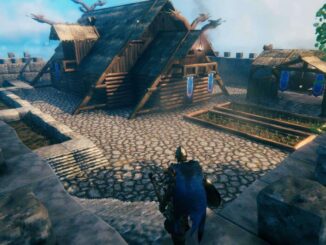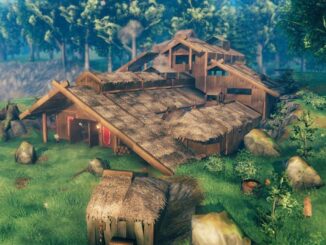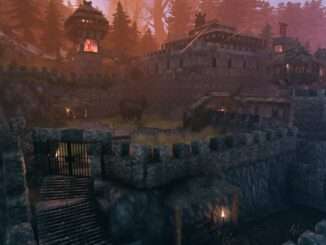
Logistics: infrastructure and transportation methods with the new map modes.
Introduction
With the introduction of the various game play modes and the portal usage slider (also to lesser extent the map and death options), moving things from one place to another has become an adjustable player choice ranging from trivial to complex.
This has an enormous impact on logistics as a whole and transport of items in particular so it may be useful to look at each usage case separately.
Casual Mode
Casual mode options include portal anything, have map, and do not drop equipped items on death.
Transport of material is trivial, reducing the logistics problems to simply a matter of providing portals, possibly with buffer chests, and base layout. The Longship becomes almost soley a serpent hunting tool. For all other necessary pruposes the Karve suffices except, perhaps, in extreme cases.
Buffer chests are an alternative to just throwing stuff on the ground and consists of simply one or more regular chests (or carts) placed close to a portal so that the player may be encumbered with any amount of weight possible and transport it anywhere between two portals without running out of stamina.
Base layout is highly dependent upon the player(s) involved and their degree of organization desired along with architectural choices ranging from what works to what’s pretty. Only mentioning here to say that base layout considerations are beyond the scope of this article but can have a large impact on the overall logistics picture.
The only real choices in casual mode material transport comes down to whether or not to have collection points and/or activity hubs, or to just wing it and drop a very temporary portal when and where needed. My typical usage in this mode is to, for example, drop a protected portal atop a swamp crypt, or a temporary portal at a logging site, perhaps a permanent portal at farms and one near the starting circle.
Immersive Mode
Immersive mode options include no portals, no map, and death is painful.
Transport of all material is difficult. On the plus side, without maps, some form of paths or at least beacon waypoints, becomes almost a necessity. For travel over the ocean, the Longship comes into its own fully eclipsing almost every usage of the Karve when transporting by sea.
Transport of material becomes a major portion of the game. The logicstics situation is complex and highly variable from world to world. To find solutions other than guess, gamble, and whim; exploration is required. Where are the various raw materials to be found? Where should they be processed? Where do you put manufacturing bases, ports, build bridges, create cart friendly roads? What impact will raids have?
Carts and ships become the major way to transport quantities of heavy materials. Small quantities may be transported by running to a collection point for drop off. If the collection points are not also processing bases, it may be a good idea to build a decent road between them and a manufacturing base or port.
Part of the decision should be based on intended frequency of use. If you are only going to haul ore from one mine to a nearby base with smelter and forge with rugged terrain in between, carrying and running the ore to the base may be much more efficient than building a road that will haul only one or two loads.
In some areas, the running routes may include steep terrain, mountain or gully sides. It is generally cheaper two put a chest at the top and bottom of such a route and perhaps use a system of ladders and chests at particularly troublesome spots. Space the chests such that you can access the one next up and the one next down from the same spot on the ladder. That way you can overburden to transfer entire contents in a single operation sequence.
Similarly for bridges, if you do not foresee needing the bridge for more than a few trips but would prefer to not get wet in the middle of your running route, place a few rafts to cover the troublesome middle part of a slapdash three floor tiles from each end bridge instead so you can jump from one to the other and cross the water. They won’t move if you aren’t on them so they shouldn’t need re-positioned for a few trips.
The above principle holds for temporary or seldom used cart roads. Rather than spend all the time, effort, and stone to make a smooth path use a combo of hoe’d and pick-axed sections with mini or even partial wood bridges composed only of floor tiles. I’ve made some where, for a stretch of cart-way, the right hand side was pickaxed or hoe’d and the left hand side was wooden floor pieces.
Save your time and effort for connections between things like a port and nearby manufacturing base which may see use over more than one biome’s progress. You will also want to put beacon fire towers along the coast each side of a long use port separated by 100 meters or so (avoiding Rule of Three event violations). I prefer a design that includes a V shaped pair of 2×2 wood walls atop a raised earth column together with a corner roof piece to act as both a chimney and a reflector. Actually not so much reflection as render distance – 2×2 vertical wooden walls are among the player made pieces with the farthest render distance. A third wall below the fire could point the way to the nearest port.





Be the first to comment